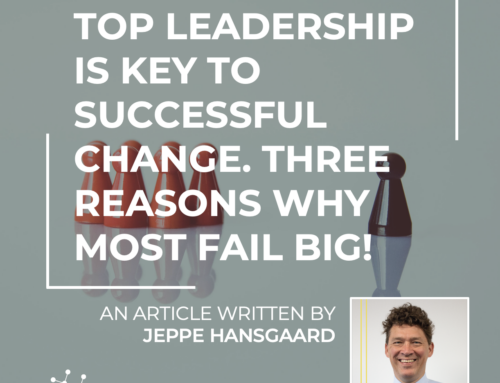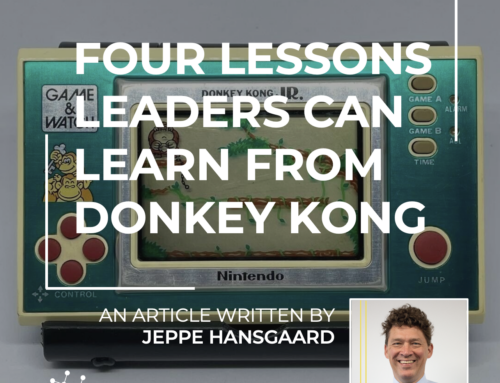Liberating Innovation
in the Age of Disaggregation
By Andrew Goldberg (Metropolis Group 360) and Jeppe Vilstrup Hansgaard (Innovisor)
Many observers believe the Covid-19 pandemic is a hinge moment in modern economic history. Some believe that the crisis will spark a new era of innovation, in particular accelerating the application of digital and AI technologies. Others are less optimistic, pointing to a possible loss of collaboration needed by companies to both generate and implement innovative ideas.
Data is mixed as to whether the nature of business operations will actually change for the better if firms disaggregate and allow employees to work from whatever location suits them. Some companies are reporting gains in productivity as employees save time on non-essential activities that were part of the old normal—commuting and workplace socializing, for example. Other evidence would indicate declining levels of collaboration, with an uncertain impact on future growth.
In our view, the urgently needed ingredients for innovation in large, disaggregated organizations were already validated in the pre-pandemic world. They are mobilizing the right people in the informal networks of the organization and empathetically instilling clearly delineated strategic values. These values need to have as their focus stimulating adaptation in today’s continuously competitive and stressful socioeconomic environment. In this process, it is possible that disaggregation might actually improve the ability of companies to conduct this type of mobilization—but only if business leadership takes the necessary steps.
When one is in the midst of a historic shift, it is often difficult to separate near and long-term change dynamics. But certain trends do seem to stand out. First, socio-economic pressures are likely to further intensify social instability and competitive pressures. For business, this places an even greater premium on nimble organizations that can adapt to technological change and unstable market conditions. Next, the pandemic has demonstrated a tremendous capacity for organizations to work outside of physical boundaries. What is unknown is whether this ability actually leads to either long term productivity growth or meaningful innovation. As innovation in large organizations often arises from informal collaboration among known and trusted individuals, it is not clear whether this collaboration will be disrupted by fragmented communication.
Prior to the pandemic, Western economies exhibited flattening productivity and innovation trends over two decades. Without the right adaptions, it is not inherently clear that our new, disaggregated business operations models will improve this situation. This is especially true for established, legacy companies with ingrained organizational arrangements, habits, and mindsets, that were struggling with self-renewal before the pandemic.
As a baseline to thinking about the post-pandemic future, we need to consider the tendencies of the past three decades.
Is the Past a Prologue?
Numerous studies have noted a secular slowdown in total factor productivity across all major economies, which only accelerated after the 2008 recession, from about 1¾% per year in 1996 to about half that in 2016. This decline occurred despite the internet explosion and increasing automation.
Alongside this decline came a raging debate over whether innovation has actually been declining. Measuring this effect has been complicated, but certain indicators cause concern.
Observers such as Tyler Cowen noted that entrepreneurship, innovation, and business dynamics have been declining. One piece of evidence is the decline of entrepreneurship (firm startups) by about 50% between 1978 and 2011. Entrepreneurs also seem less innovative and productive. The ratio of patents to GDP continues to decline. The average size of research teams is rising, suggesting that over time, substantially more human and financial resources are required to deliver any innovation.
Of course, the leaders of huge companies, especially in the tech sector, like to speak with excitement about big, breakthrough innovations on the way. In a dynamic era of AI innovation and the potential of quantum computing, it may be that we are poised to change this past record of slowing dynamism. On the other hand, if history is any guide, the growing market consolidation of many sectors (not the least in technology) may have a stifling effect on transformative innovations.
Certainly, many legacy companies are still struggling to keep pace with the adaptation to digitalization and automation. Fighting the battle to modernize often leaves little “headroom” for team innovation. Moreover, research prepared by Innovisor, indicates that in our more disaggregated communications environment, there has been a decline in collaboration by as much as 30% during the Covid-19 pandemic
Engaging Informal Innovation Networks
For a larger business to improve vitality and innovation, it must be able to motivate those with the greatest ability to move the organization. Years of research demonstrate that within any given mission-based group, only about 3% of the employees shape the perceptions of the rest. In our pre-pandemic world, these individuals were often out of the line of sight in traditional, hierarchical organizations. Their influence would not register in standard HR reviews that are often skewed to the formal organization.
Framing a collaborative dialogue between top management and key influencers around product and process innovation was often complicated and sometimes haphazard. One may surmise that this situation may account for some as yet unquantified portion of the declining spirit of innovation. After all, innovation in large firms relies a great deal on motivated
individuals who are willing to work above and beyond their formal roles, possess a spirit of inquiry and have a propensity for risk-taking—characteristics that should define the “right 3%” of intrapreneurs in one’s organization
Disaggregation’s Impact?
It is entirely possible that even with the widespread distribution of the vaccines for Covid-19, many companies will continue to operate in virtual settings. A combination of factors may affect this shift. Continued concerns over health and safety will remain and are certainly legitimate. Covid-19 is unlikely to be the last pathogen global society may have to face in the coming years. Then there are the bottom-line effects. From a CFO perspective, sharp drops in office overhead and travel, accompanied by near term work productivity gains may offset a disruption to traditional collaboration.
It is still too early to know, in detail, disaggregation’s full impact. Much of the data is partial and anecdotal. The younger age cohort, unmarried and uncertain of the future, seems to be registering high degrees of loneliness and anomic behavior. Firms that work on intangibles—tech and finance—seem to have adapted the best-given business models that glide more easily into virtual practices. Start-ups may actually benefit, as virtual work alleviates the cost burdens of travel, physical conferences, and office overhead. It is not difficult for creators to engage in small virtual groups. And digital natives are accustomed to building virtual trust networks.
The Liberation of Disaggregation
The most challenging situations in our tumultuous era may be faced by the large, tangible product companies whose business models combined physical proximity with informal communication to spur ideation. Yet even for these companies, disaggregation could prove to be liberating. It is a possible pathway to bypass traditional hierarchies and silos, shattering the line of sight barriers shaped by the physical confines of a firm. Top management may feel freer to reach directly and virtually to pockets of creative talent that they would otherwise overlook.
To be successful, top management not only needs to find that informal network of influencers and innovators. They need individuals who have a recognized ability to influence the organization in its new, semi-virtual setting. If you can locate the talent, it will be easier to form virtual, task-driven teams that are motivated by competitive values. It makes it easier to tap individuals to encourage them to share their breakthrough ideas.
Finding and Bonding with the ”3%” Around
Competitive Values
Competitive Values
Even in a virtual setting, tribal behavior patterns are unlikely to disappear. They will simply be altered to a virtual setting. We have already seen this play out negatively in the polarization that occurs on social platforms such as Twitter and Facebook.
From our perspective, the value set for successful business leadership in the disaggregated organization will include:
- Top management must have a laser-sharp definition of the motivating values they wish to instill in a firm, and how these values translate into competitive performance.
- Competitive values must account for the reality of a less economically permissive, socially turbulent world. It must recognize that the values associated with innovation: acceptance of risk, investment in experimentation, and the freedom to act out of the organizational box, will shape the winners of the future.
- You must identify the “right 3%”. This requires a systematic process: locating, engaging, and motivating influencers who can be a positive force for change.
- The right 3%—their values and spirit—will also be a magnet for attracting and mentoring the new talent so essential for business longevity.
There is an even greater urgency in this pandemic era to redefine organizational innovation. The old normal was already disrupted and constrained. The new abnormal—influenced by a heightened degree of risks and social disturbance—will be even more challenging. It is best to go into the future with an organization redefined and mobilized to meet that challenge.
ORIGINALLY POSTED ON https://www.metropolisgroup360.com/post/liberating-innovation
Do you like our articles? Subscribe to our newsletter.









